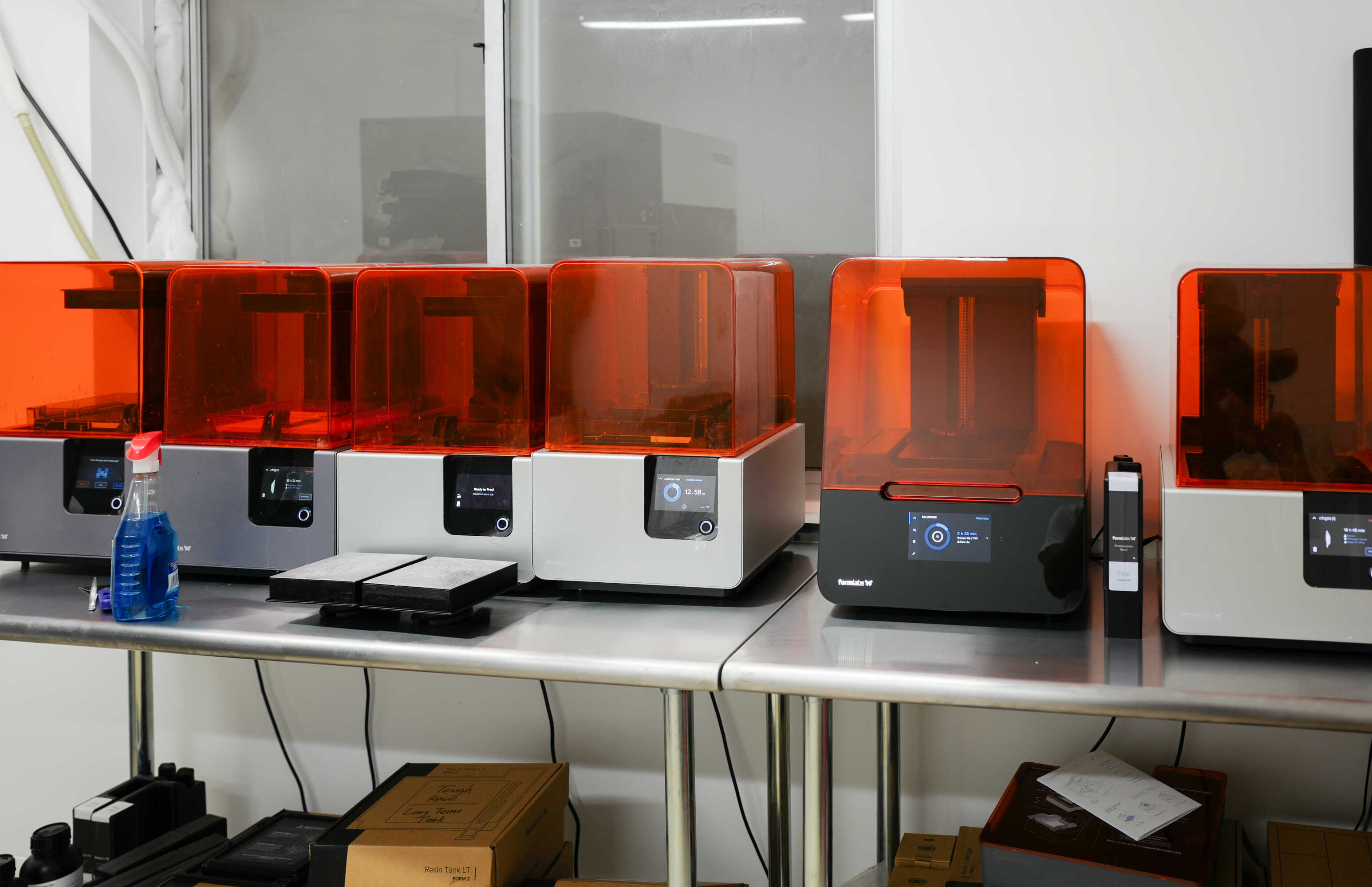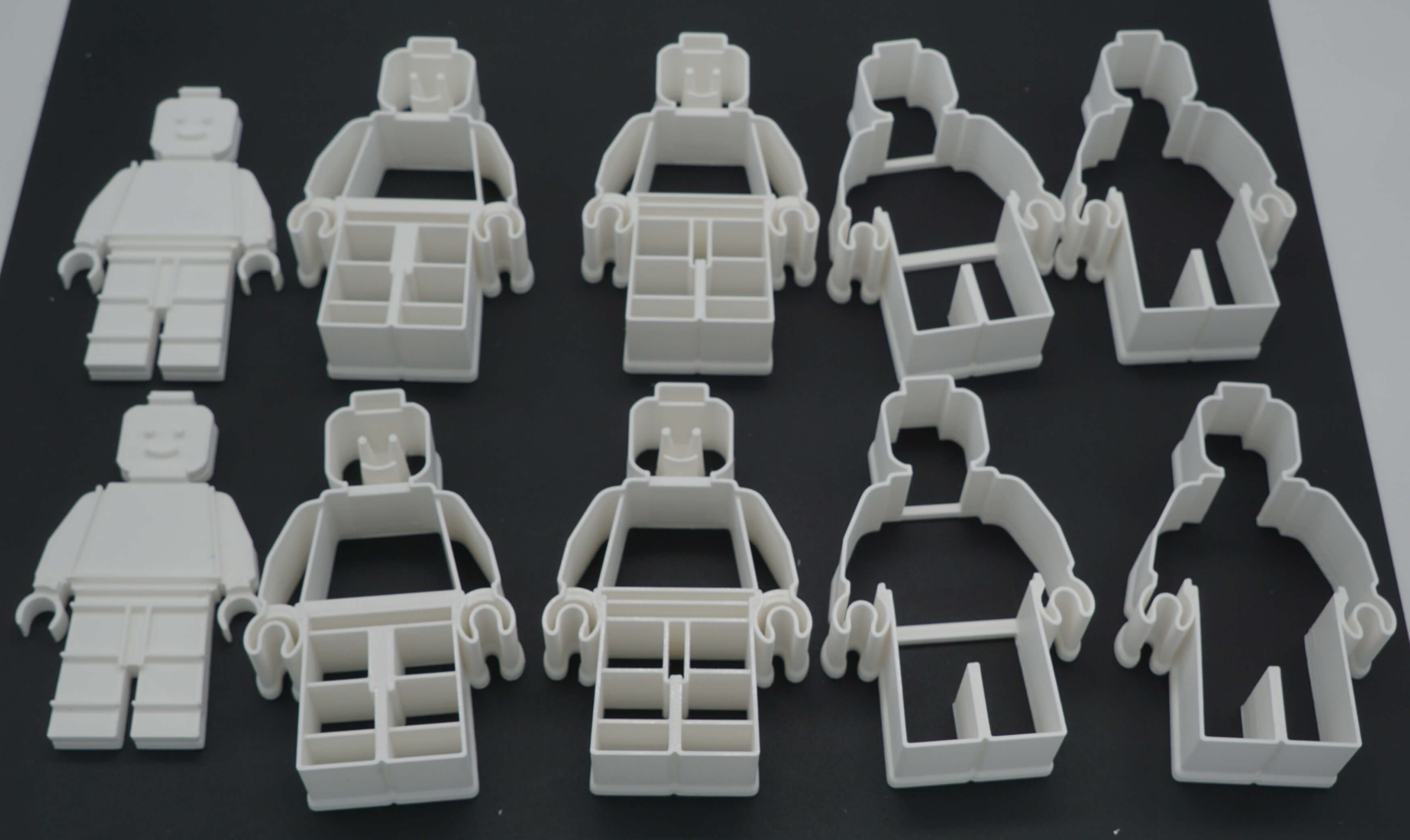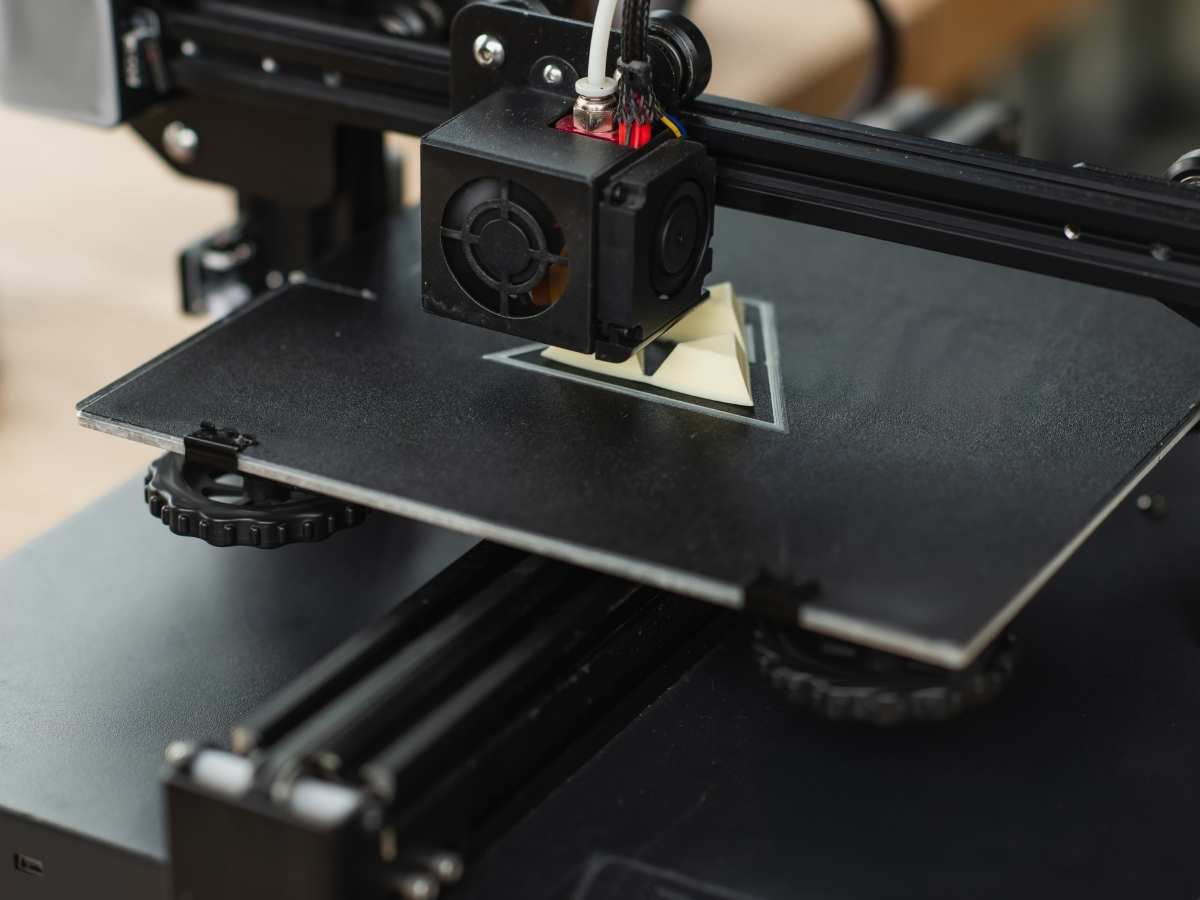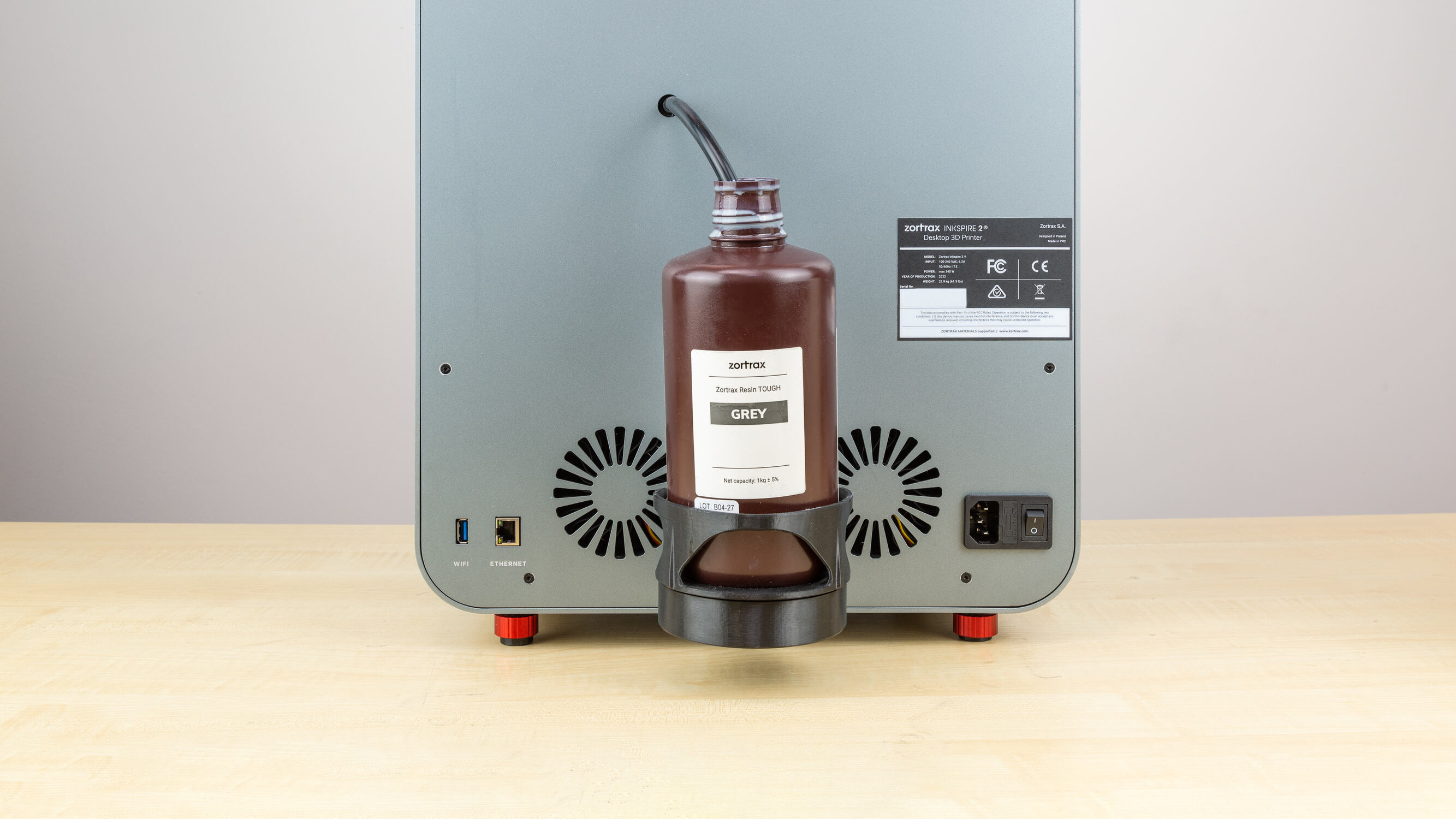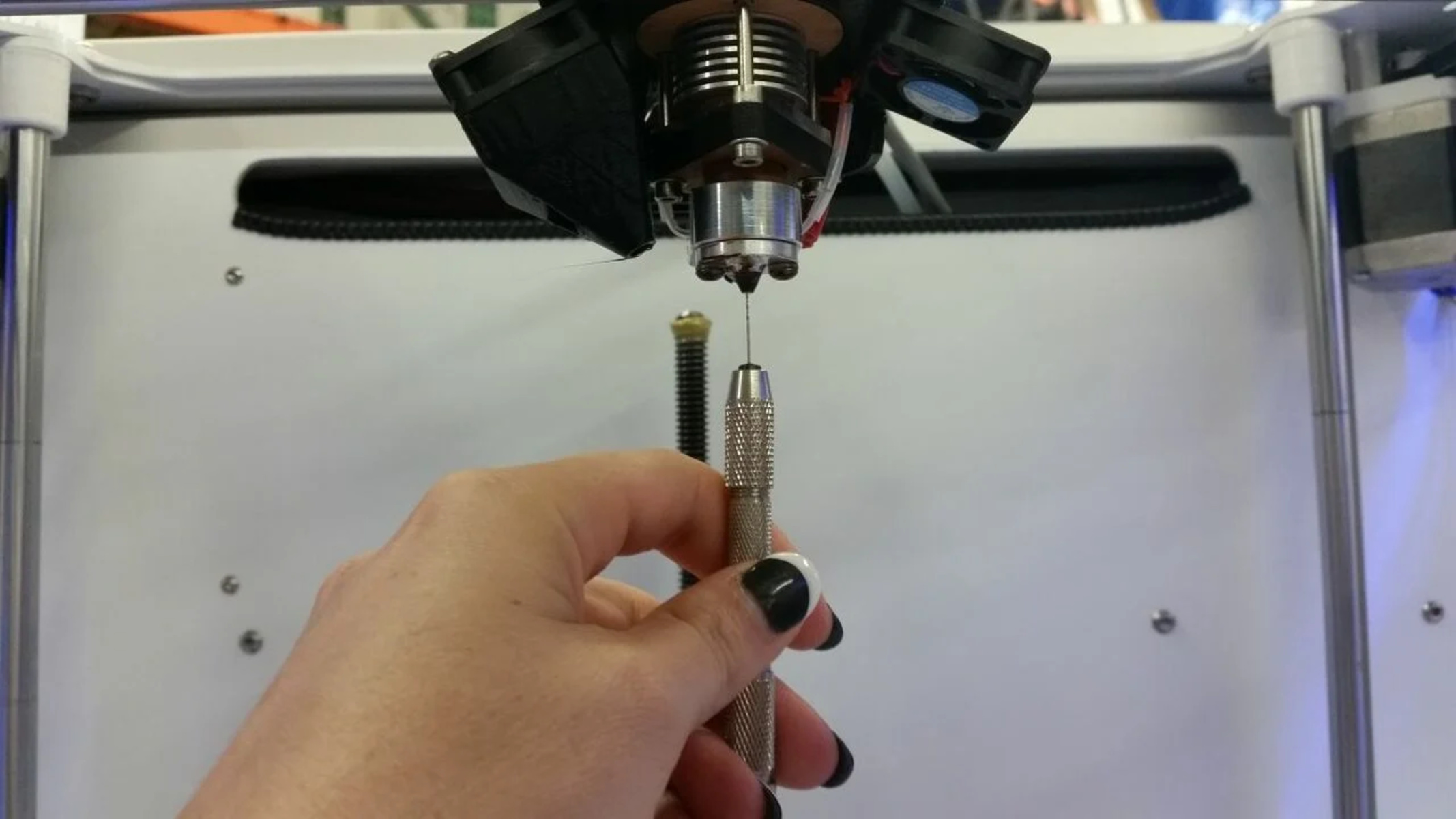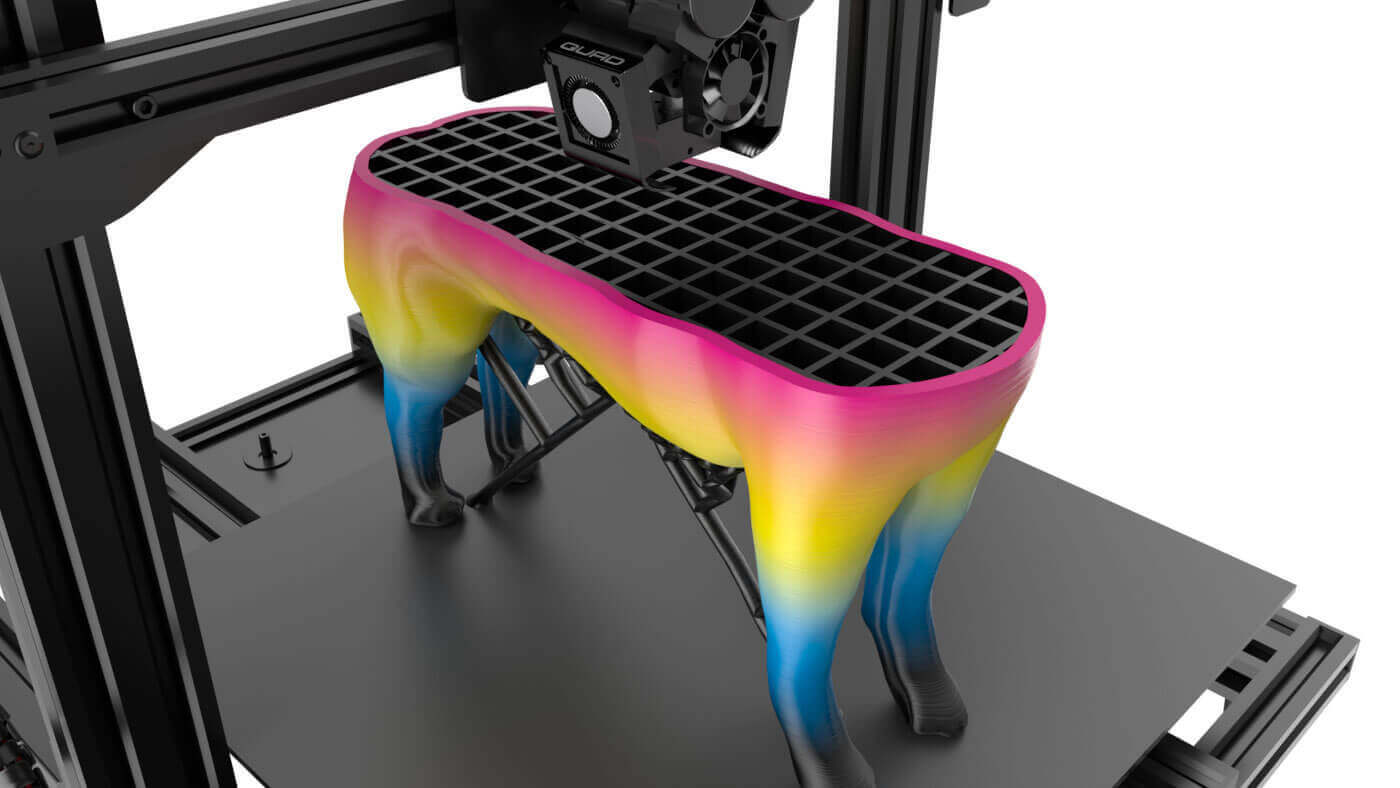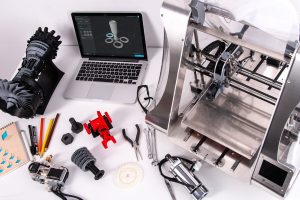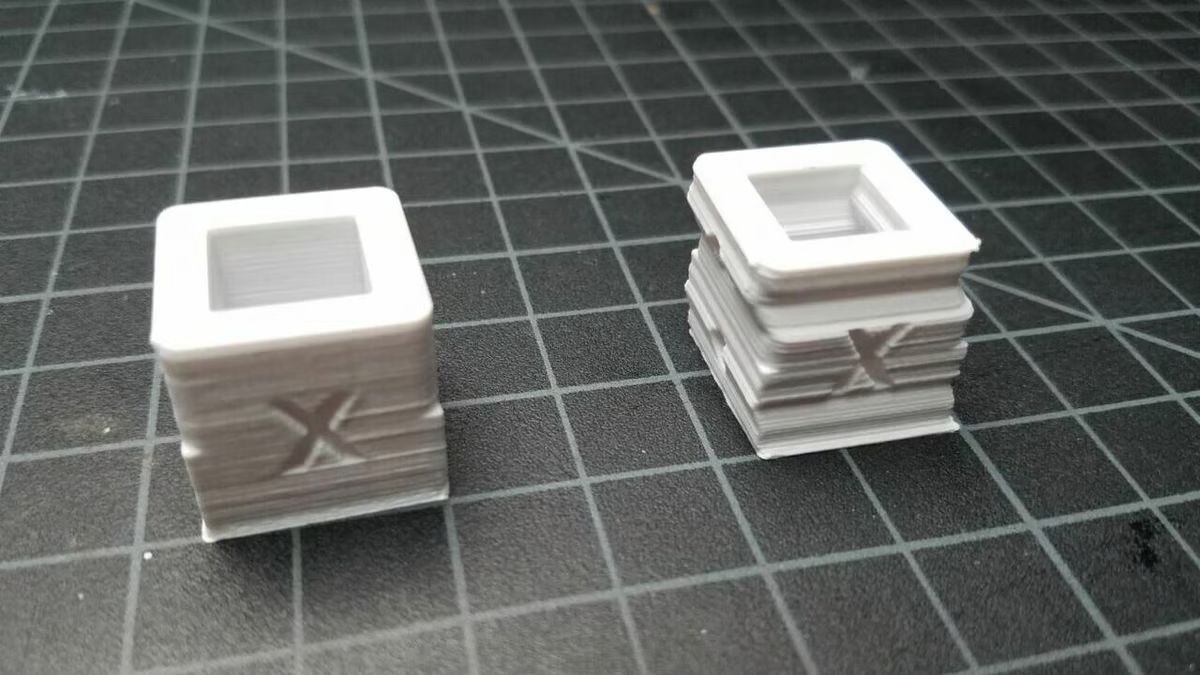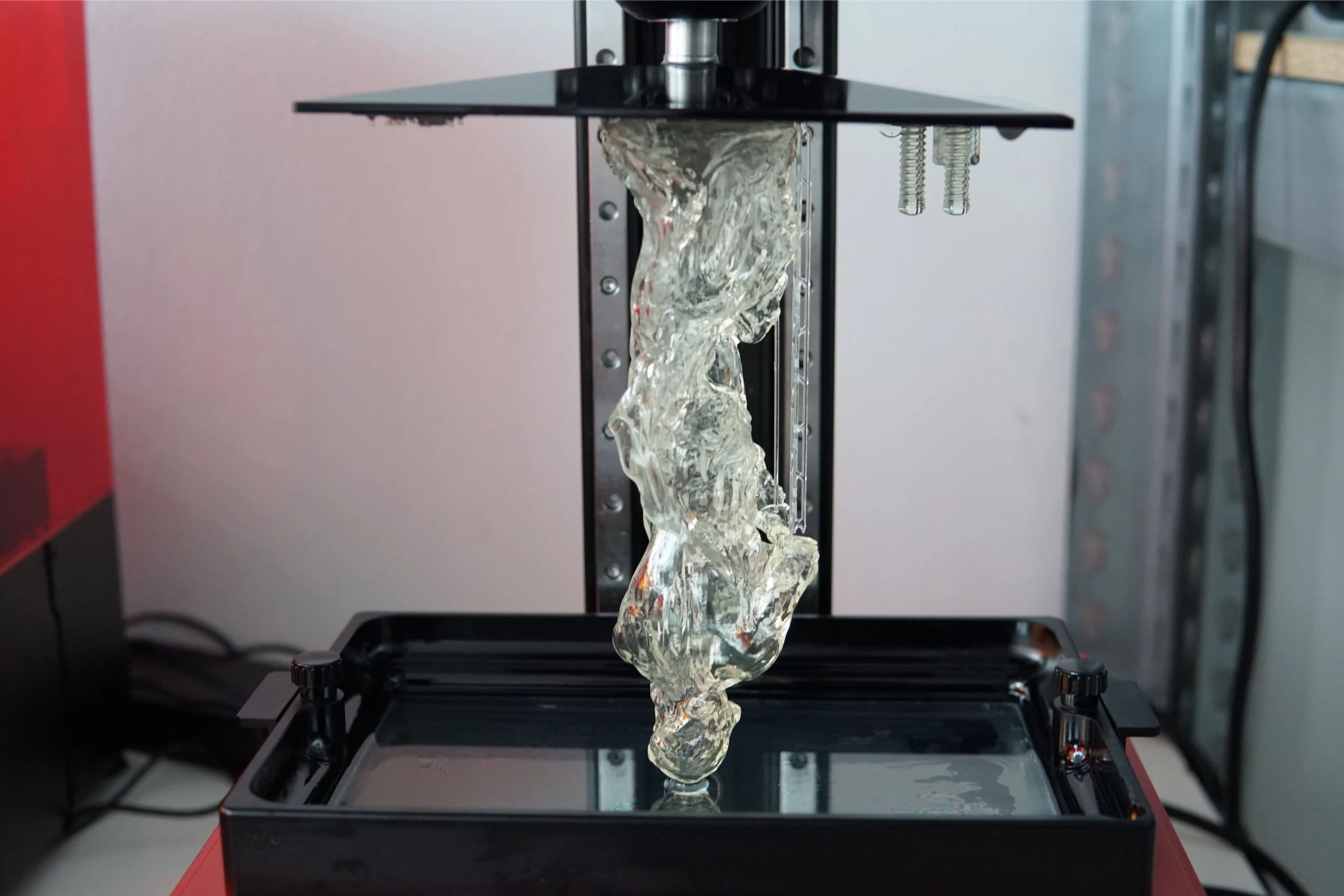Introduction
3D printers have gained immense popularity in recent years, enabling individuals and businesses to create three-dimensional objects with ease. Whether you’re a hobbyist, designer, or entrepreneur, having a 3D printer can open up a world of possibilities and bring your ideas to life.
However, once you have your 3D printer, the next question that arises is where to place it. The location of your 3D printer can impact its functionality, safety, and overall user experience. In this article, we will explore some key considerations when deciding where to put your 3D printer, ensuring that you create an optimal printing environment.
Note: Before setting up your 3D printer, it’s important to read the manufacturer’s guidelines and follow the recommended installation instructions for your specific model.
When determining the placement of your 3D printer, you need to consider several factors, including dedicated workspace, ventilation and air quality, electrical requirements, noise level, accessibility and convenience, and safety precautions. Let’s delve into each of these considerations to help you make an informed decision.
Considerations for Placing a 3D Printer
When it comes to finding the ideal spot for your 3D printer, there are several important considerations to keep in mind. These factors will ensure that your printer operates efficiently and safely, while also providing you with ease of use and convenience. Let’s take a closer look at each of these considerations:
- Dedicated Workspace: It’s essential to have a dedicated space for your 3D printer. This space should be clean, well-lit, and free from clutter. A dedicated workspace allows you to organize your materials and tools, making it easier to access everything you need for your printing projects. Additionally, having a designated area helps to minimize the risk of accidental damage or interference from other objects.
- Ventilation and Air Quality: Proper ventilation is crucial when placing a 3D printer. The printing process can produce fumes and odors, especially if you are using certain types of filaments. Ensure that the room has adequate ventilation or consider using a ventilation system to remove any potentially harmful particles or odors. Maintaining good air quality ensures a healthier environment for you and helps prevent any potential health issues.
- Electrical Requirements: 3D printers require a stable power source to function properly. Before placing your printer, make sure the area has adequate power outlets that can handle the printer’s electrical requirements. Avoid using extension cords or power strips unless they are of high quality and can handle the printer’s power load. It’s also a good idea to have surge protection in place to safeguard your 3D printer from unexpected power fluctuations.
- Noise Level: 3D printers can be noisy during operation, especially when using certain printing techniques or materials. Consider the noise level produced by your printer and choose a location away from noise-sensitive areas, such as bedrooms or quiet workspaces. If necessary, you can use noise-reducing materials or enclosures to minimize the noise and create a more comfortable working environment.
- Accessibility and Convenience: Placing your 3D printer in a convenient location enhances your overall printing experience. Ideally, choose a spot that is easily accessible to load and unload materials, check on the progress of prints, and perform any necessary maintenance tasks. Additionally, ensure that there is sufficient space around the printer for you to move freely and safely. Consider the placement of other equipment, such as a computer or storage for your 3D printing supplies, to create a well-organized and efficient workspace.
- Safety Precautions: Safety should always be a top priority when setting up your 3D printer. Ensure that your printer is placed on a stable and level surface to prevent any accidental tipping. Keep the printer away from flammable materials or liquids that could pose a fire hazard. It’s also important to have a fire extinguisher nearby and familiarize yourself with the printer’s emergency shutdown procedures. Taking these safety precautions will help protect both you and your equipment.
By taking into account these considerations, you can find the perfect location for your 3D printer that provides optimal functionality, safety, and ease of use. Keep in mind that depending on your specific printer model and personal preferences, additional factors may need to be considered.
Dedicated Workspace
Having a dedicated workspace for your 3D printer is essential for maintaining organization, efficiency, and safety. Here are some key points to consider when setting up your dedicated workspace:
- Clean and well-lit: Ensure that the area where you place your 3D printer is clean and well-lit. A clean environment helps prevent dust and dirt from getting into your printer, which can affect print quality and performance. Good lighting is also important for clear visibility when working on your prints.
- Clutter-free: Keep your workspace free from clutter to avoid any accidental damage to the printer or interference with its operation. Having a clean and organized workspace allows for easier access to materials, tools, and additional equipment that you may need during the printing process.
- Materials storage: Consider having storage options for your 3D printing materials, such as filaments or resin. Properly storing these materials in a dedicated space helps keep them protected from environmental factors like moisture or temperature fluctuations, which can affect their quality and printability.
- Work surface: Ensure that you have a stable, sturdy work surface or table to place your 3D printer on. The surface should be level to prevent any vibrations or wobbling during the printing process. A dedicated work surface also provides a designated area for the printer, reducing the risk of accidental damage.
- Organization: Consider organizing your workspace using storage solutions like shelves, drawers, or bins. This allows you to keep your tools, spare parts, and other accessories within easy reach for quick and convenient access.
Having a dedicated workspace for your 3D printer not only enhances the organization and efficiency of your printing process but also promotes a safe working environment. By keeping your workspace clean, clutter-free, and well-organized, you can maximize the functionality and longevity of your 3D printer while ensuring a smooth and enjoyable printing experience.
Ventilation and Air Quality
Proper ventilation and air quality are vital considerations when placing your 3D printer. The printing process can release fumes and particles that may impact your health and the overall quality of your prints. Here are some key factors to consider:
- Ventilation: Adequate ventilation is crucial to remove any potentially harmful fumes or odors that may be released during the printing process. If you’re using a filament that emits fumes, consider placing your printer near a window or using a ventilation system to extract the fumes from the workspace. This will help maintain good air quality and create a healthier environment for you to work in.
- Filtration: Consider incorporating air filtration systems or using air purifiers to further improve the air quality in your printing area. These devices can effectively capture and remove fine particles and contaminants, ensuring cleaner air for you to breathe during the printing process.
- Enclosures: Some printers come with built-in enclosures or offer optional enclosures as an accessory. Enclosures help contain the fumes and particles generated during printing, reducing their dispersal in the surrounding environment. If your printer doesn’t come with an enclosure, you can consider building or purchasing one to help improve ventilation and air quality.
- Location: Place your 3D printer in an area that allows for proper airflow and ventilation. Avoid positioning it in a small, enclosed space or near any sensitive areas like bedrooms or living rooms. Optimal air circulation helps dissipate any fumes or particles and prevents them from accumulating in the workspace.
By prioritizing ventilation and air quality, you create a healthier and more comfortable environment for yourself and minimize the potential health risks associated with certain printing materials. Good ventilation also helps to maintain the quality of your prints, ensuring that they turn out as intended.
Electrical Requirements
Considering the electrical requirements of your 3D printer is essential to ensure its proper functioning and avoid any potential electrical hazards. Here are key factors to take into account:
- Power outlets: Before placing your 3D printer, ensure that the area has appropriate power outlets available. Different printers have varying power requirements, so make sure the outlets can handle the electrical load of your specific model. It’s recommended to use dedicated outlets for your printer to avoid overloading circuits or causing power fluctuations.
- Stable power supply: A stable power supply is crucial for uninterrupted and accurate printing. Avoid using power strips or extension cords unless they are of high quality and can handle the power load of your printer. Consider using surge protectors to safeguard your printer from any voltage spikes or sudden electrical surges that may occur.
- Wiring safety: Pay attention to the wiring around your printer’s location. Ensure that there are no exposed or damaged wires that could pose a safety risk. Keep the wires organized and away from any potential sources of damage, such as liquids or sharp objects.
- Backup power: Consider having a backup power supply or a battery backup system in place to prevent loss of progress or damage to your prints in the event of a power outage. This can provide temporary power to your printer, allowing you to safely shut it down and protect your ongoing print jobs.
Taking into account the electrical requirements of your 3D printer ensures a stable and secure printing environment. By providing adequate power and maintaining proper wiring safety, you can minimize the risks of electrical malfunctions and protect your printer from potential damage.
Noise Level
Understanding and managing the noise level of your 3D printer is essential, especially if you plan to place it in a shared or noise-sensitive environment. Consider the following factors when dealing with the noise generated by your printer:
- Noise output: 3D printers can produce varying levels of noise during operation. The noise level mainly depends on the type of printer, printing techniques used, and the materials being printed. Research the noise output of your specific printer model to have a better idea of what to expect.
- Noise reduction techniques: Several noise reduction techniques can be utilized to minimize the noise generated by your printer. These include using noise dampening materials or enclosures, opting for quieter printing modes or settings, and selecting filaments that produce less noise during the printing process.
- Location: Consider where you place your 3D printer to minimize its impact on the surrounding environment. Choose a location away from noise-sensitive areas such as bedrooms or quiet workspaces. If necessary, you can isolate the printer in a separate room, use sound-absorbing materials to reduce noise, or consider timing your prints for periods when the noise would have minimal impact on others.
- Noise-canceling headphones: If reducing the noise level of your printer is challenging, you can consider using noise-canceling headphones to block out the sounds. This allows you to work comfortably while minimizing the disturbance caused by the printer’s noise.
Understanding and managing the noise level of your 3D printer ensures a more peaceful and comfortable work environment. By implementing noise reduction techniques and considering the printer’s location, you can minimize the impact of noise on yourself and those around you.
Accessibility and Convenience
Considering the accessibility and convenience of your 3D printer’s location is essential to optimize your printing experience. Here are some key factors to take into account:
- Accessibility: Choose a location that allows for easy access to your 3D printer. This includes being able to easily load and unload print materials, access the printer’s controls or touchscreen, and monitor the progress of your prints. A well-placed printer ensures you can conveniently perform maintenance tasks and address any issues that may arise during the printing process.
- Proximity to other equipment: Consider the placement of other equipment or devices that are integral to your 3D printing workflow. This includes your computer or mobile device used for slicing models and sending print files to the printer. Having your printer in close proximity to these devices improves workflow efficiency by reducing the need to move back and forth between different workstations.
- Storage and organization: Ensure that you have sufficient storage space for your 3D printing materials, tools, and spare parts. Consider having storage options like shelves, drawers, or bins nearby for easy access to these items. A well-organized workspace minimizes the time spent searching for supplies and allows you to focus on the printing process.
- Workspace comfort: Make sure your printing area is ergonomically designed and comfortable for extended periods of use. A comfortable chair, proper lighting, and a well-positioned monitor (if using a computer) all contribute to a productive and enjoyable printing experience. Additionally, consider adding work surface extensions or stands to hold items like filament spools or tools within reach.
By prioritizing accessibility and convenience in your printer’s placement, you can streamline your printing workflow and create a more efficient and user-friendly work environment. Being able to easily access and monitor your printer allows for seamless operation and ensures a more enjoyable 3D printing experience.
Safety Precautions
Ensuring the safety of your 3D printer setup is of utmost importance. Consider the following safety precautions to mitigate any potential risks:
- Stability and positioning: Place your 3D printer on a stable and level surface to prevent any accidental tipping or movement during operation. Make sure it is positioned in a way that minimizes the chances of it being bumped or knocked over.
- Fire safety: Keep your printer away from flammable materials or liquids that could pose a fire hazard. This includes avoiding placing it near curtains, paper, or other easily combustible objects. Implement fire safety measures such as having a fire extinguisher nearby and familiarizing yourself with the emergency shutdown procedures for your printer.
- Electrical safety: Ensure that your printer’s electrical components and wiring are in good condition. Examine the power cord for any signs of damage and replace it if necessary. Additionally, avoid overloading electrical outlets by using dedicated outlets for your printer and using surge protectors to safeguard against power surges.
- Equipment and maintenance: Regularly inspect your printer for any signs of wear, damage, or loose components. Follow the manufacturer’s guidelines for proper maintenance and cleaning to keep your printer in optimal condition. This includes regularly checking and replacing consumable parts such as printer nozzles or build plates to avoid potential malfunctions or accidents.
- Work area safety: Keep the area around your 3D printer clean and free from clutter. This prevents objects from obstructing the printer’s movements or falling onto the print bed during operations. Clearing the workspace also reduces the risk of accidental injuries while handling tools or moving around the printer.
By implementing these safety precautions, you can ensure a secure working environment for both yourself and your 3D printer. Prioritizing stability, fire safety, electrical safety, equipment maintenance, and workspace cleanliness minimizes the risk of accidents and helps protect your investment.
Conclusion
Choosing the right location for your 3D printer is essential for creating an optimal printing environment. By considering factors such as a dedicated workspace, ventilation and air quality, electrical requirements, noise levels, accessibility and convenience, and safety precautions, you can ensure a successful and enjoyable 3D printing experience.
Setting up a dedicated workspace helps keep your area clean, organized, and free from clutter, allowing for efficient workflow and easy access to materials and tools. Proper ventilation and air quality management ensure a healthier environment and protect against potential fumes or odors released during the printing process.
Understanding the electrical requirements of your printer ensures stable power supply and minimizes the risk of electrical hazards. Managing the noise level of your printer is important for creating a peaceful working atmosphere, particularly in shared or noise-sensitive spaces.
Considering accessibility and convenience allows for easy loading, monitoring, and maintenance of your printer, as well as seamless integration with other equipment. Lastly, prioritizing safety precautions such as stability, fire safety, electrical safety, equipment maintenance, and workspace cleanliness helps protect both you and your 3D printer from accidents.
By taking all of these considerations into account, you can find the perfect location for your 3D printer that promotes efficiency, safety, and an enjoyable printing experience. Remember to always consult the manufacturer’s guidelines and follow proper installation procedures for your specific printer model. Happy printing!







